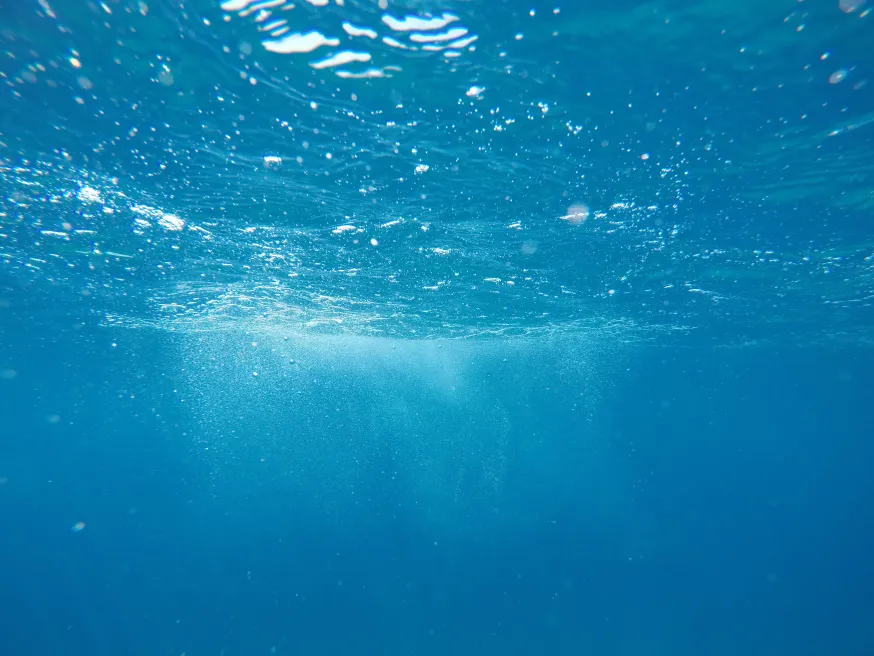Process for splitting water into hydrogen and oxygen
Electrolyzer
An electrolyser is a device or system that uses the process of electrolysis to split water (H₂O) into its components hydrogen (H₂) and oxygen (O₂) using an electric current. This technology plays a crucial role in the production of hydrogen from renewable electricity. Hydrogen is a clean and versatile energy carrier. Electrolysers are likely to be key components for future energy supply, supply of industrial processes and energy storage in the integration of renewable energies.

Electrolysis and the basics of electrolyzers
Electrolysis is an electrochemical process that requires an electrolyte, i.e. a substance that can conduct electricity via the flow of ions. By applying an electric current, ions are generated at one of the two electrodes immersed in the electrolyte. These then migrate through the electrolyte to the other electrode. Chemical reactions at the respective electrodes break down a substance into its components. The chemical reaction at the electrodes usually requires catalysts, which are attached to the electrodes in an electrically conductive manner. The best known electrolysis is that of water into its components oxygen and hydrogen.
An electrolyser is a device for carrying out the electrolysis process. It usually consists of several components:
Electrolyte: A conductive substance that enables the flow of ions. In water electrolysis, the electrolyte is the water itself; H+ is transported as an ion. In alkaline electrolysis, potassium hydroxide is added to enable the conductivity of water for OH- .
Electrodes: Conductive materials, often made of metals or metal oxides, which serve as sites for the electrochemical process of electron transfer.
Electrode catalysts: A material that promotes the formation of the elements by adsorption of the chemical substances involved and is itself conductive to enable electron transfer.
Anode: The positive electrode at which oxidation takes place, resulting in the release of oxygen gas.
Cathode: The negative electrode at which a reduction takes place that leads to the formation of hydrogen gas.
Electrolysis chamber: The room in which the electrolyte and electrodes are located so that the reactions can take place in a controlled manner
Diaphragm: A membrane or membrane-like separating layer between the surrounding space of the anode and the cathode, through which the positively or negatively charged ions can move from one electrode to the other. Ideally, this diaphragm is impermeable to the elements formed so that the elements do not mix and the reverse reaction does not occur. The back reaction of hydrogen and oxygen to form water is known to be the oxyhydrogen reaction and would have serious consequences for the immediate surroundings.
Types of electrolyzers
There are different types of electrolyzers, each of which uses different materials and technologies for water splitting:
Alkaline electrolysers (AEL): Alkaline electrolysers use an alkaline electrolyte solution, often aqueous potassium hydroxide (KOH), and operate at 60-90°C. In alkaline electrolysis, hydroxide ions are transported through the diaphragm. AELs are known for their longevity and mature technology, but are less efficient than some newer technologies. Pressurized operation up to 10 bar is possible to obtain hydrogen already compressed.
Proton exchange membrane electrolyzers (PEMEL): PEM electrolyzers use a solid polymer electrolyte membrane that selectively allows protons to pass through. They operate at lower temperatures and can respond quickly to changes in current, making them suitable for variable renewable energy sources. The PEMEL can also be operated under pressure up to 50 bar, which makes it much easier to recompress hydrogen.
Solid oxide electrolysers (SOEL): SO electrolysers use a solid ceramic electrolyte and operate at high temperatures of 600-800°C. They are efficient at generating hydrogen and can also work in reverse mode as fuel cells, i.e. generate electricity from hydrogen and oxygen. Due to the high temperature, the theoretical efficiency is higher, but good heat recovery and insulation are required. Due to the ceramic structure, SOEL systems usually operate without pressure and are sensitive to temperature fluctuations. Due to the possibility of cell breakage, rapid load changes are not possible.
High-temperature electrolysers (HTEL): This term covers all electrolysis technologies that operate at high temperatures of 600-1000°C. The most common representatives are based on solid oxide or molten carbonate electrolytes.
Operation and process of electrolyzers
The operation of an electrolyzer involves two main electrochemical reactions at the electrodes:
At the anode: Oxidation takes place at the anode by removing electrons, releasing oxygen gas.
The following reaction takes place in the PEMEL:
2H2O → O2 + 4H⁺ + 4e-
At the cathode: Electrons are transferred to a chemical species at the cathode and it is reduced, producing hydrogen gas.
The following reaction takes place in the PEMEL:
4H⁺ + 4e- → 2H2
These reactions are driven by the electrical potential difference (voltage) applied to the electrodes. The entire process requires an energy supply in the form of electricity.
Electrolysers play a central role in the transition to a low-carbon and sustainable energy system. They enable the production of clean hydrogen, which can replace fossil fuels in various applications or be used to produce synthetic hydrocarbons from CO2. Although efficiency, cost and longevity remain challenges, electrolysers are a key technology for the transition to a more sustainable energy future.